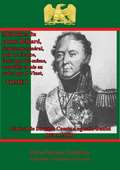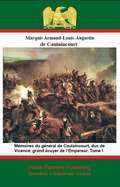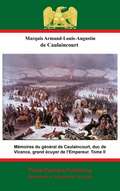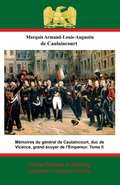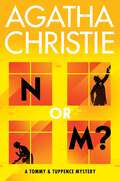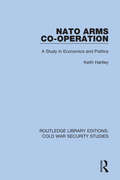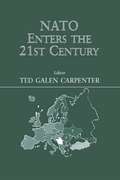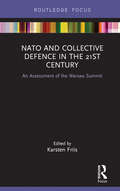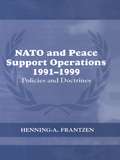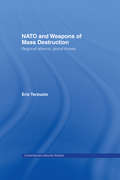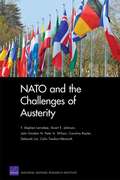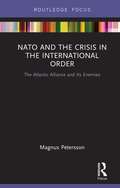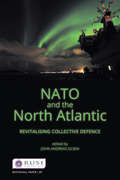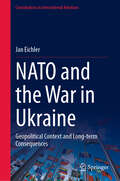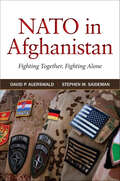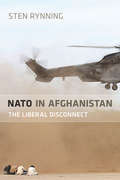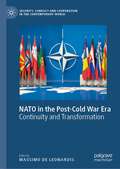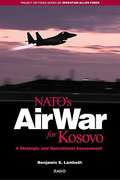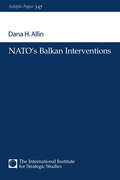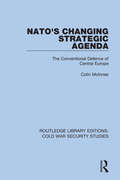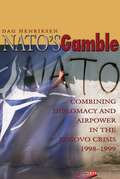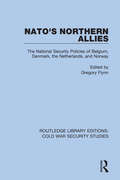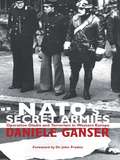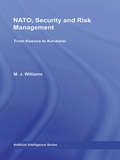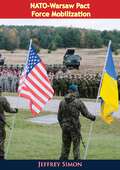- Table View
- List View
Mémoires du comte Belliard, lieutenant-général, pair de France écrits par lui-même (Mémoires du comte Belliard, lieutenant-général #1)
by Général de Division Comte Augustin-Daniel Belliard« Mémoires du comte Belliard, lieutenant-général, pair de France écrits par lui-même, recueillis et mis en ordre par M. Vinet, l'un de ses aides-de-camp. Paris, Berguet et Petion, 1842, 3 vol. in-8°.Publication décousue où des lettres de Murat à Belliard en 1812 suivent le récit de la bataille de Valmy. Les affaires d'Espagne, une conversation avec l'Empereur à Dresde, des lettres de Napoléon à Murat du 25 août au 13 octobre 1813, un récit de la capitulation de Paris, une lettre du capitaine Magnien sur la défection de Souham, l'entrevue à Fontainebleau en 1814 avec un illuminé qui veut annoncer à l'Empereur qu'il régnera encore mais que des malheures plus grand suivront, etc. en forment l'essential. » p 15/16 - Professeur Jean Tulard, Bibliographie Critique Des Mémoires Sur Le Consulat Et L'Empire, Droz, Genève, 1971TOME I seul.
Mémoires du général de Caulaincourt, duc de Vicence, grand écuyer de l’Empereur. Tome I (Mémoires du général de Caulaincourt, duc de Vicence, grand écuyer de l’Empereur. #1)
by Jean Hanoteau Général de Division Armand Augustin Louis de Caulaincourt, Duc de Vincence« Caulaincourt n'avait cessé sous l'Empire de prendre des notes chaque jour au bivouac ou dans le cabinet de Tuileries. Il se serait décidé à les mettre en forme entre 1822 et 1825. L'énorme documentation réunie quotiennement explique la valeur du témoignage du duc de Vicenze... le récit ne commence qu'à l'entrevue d'Erfurt. Il se poursuit avec la campagne de Russie et la retraite. C'est dans les chapitres VII-VIII et XI ( « En traîneau avec l'Empereur » ) souvent réédites que l'on dispose d'un document de premier ordre sur l'état d'esprit de Napoléon après le désastre de 1812. Quittant la Grande Armée, l'Empereur voyage en la seule compagnie de Caulaincourt de Smorgoni à Paris. Pendant ce long voyage, Napoléon se confie au Grand Ecuyer avec d'autant plus de franchise qu'il ignore que Caulaincourt prend des notes. « Puis Caulaincourt narre les péripéties de Congrès de Châtillon et y justifie son attitude. On notera d'importants développements sur l'entrée des Alliés à Paris, l'attitude de Napoléon, la défection de Marmont, l'abdication et la tentative de suicide de l'Empereur. Les mémoires s'arrêtent aux « Adieux de Fontainebleau » p 33 - Professeur Jean Tulard, Bibliographie Critique Sur Des Mémoires Sur Le Consulat Et L'Empire, Droz, Genève, 1971
Mémoires du général de Caulaincourt, duc de Vicence, grand écuyer de l’Empereur. Tome II (Mémoires du général de Caulaincourt, duc de Vicence, grand écuyer de l’Empereur. #2)
by Général de Division Armand Augustin Louis de Caulaincourt, Duc de Vincence« Caulaincourt n'avait cessé sous l'Empire de prendre des notes chaque jour au bivouac ou dans le cabinet de Tuileries. Il se serait décidé à les mettre en forme entre 1822 et 1825. L'énorme documentation réunie quotiennement explique la valeur du témoignage du duc de Vicence... le récit ne commence qu'à l'entrevue d'Erfurt. Il se poursuit avec la campagne de Russie et la retraite. C'est dans les chapitres VII-VIII et XI [ « En traîneau avec l'Empereur » ] souvent réédites que l'on dispose d'un document de premier ordre sur l'état d'esprit de Napoléon après le désastre de 1812. Quittant la Grande Armée, l'Empereur voyage en la seule compagnie de Caulaincourt de Smorgoni à Paris. Pendant ce long voyage, Napoléon se confie au Grand Ecuyer avec d'autant plus de franchise qu'il ignore que Caulaincourt prend des notes.« Puis Caulaincourt narre les péripéties de Congrès de Châtillon et y justifie son attitude. On notera d'importants développements sur l'entrée des Alliés à Paris, l'attitude de Napoléon, la défection de Marmont, l'abdication et la tentative de suicide de l'Empereur. Les mémoires s'arrêtent aux « Adieux de Fontainebleau » p 33 - Professeur Jean Tulard, Bibliographie Critique Des Mémoires Sur Le Consulat Et L'Empire, Droz, Genève, 1971Tome II - Moscou, La Retraite, En Traîneau Avec l'Empereur, L'Arrivée à Paris
Mémoires du général de Caulaincourt, duc de Vicence, grand écuyer de l’Empereur. Tome III (Mémoires du général de Caulaincourt, duc de Vicence, grand écuyer de l’Empereur. #3)
by Général de Division Armand Augustin Louis de Caulaincourt, Duc de Vincence« Caulaincourt n'avait cessé sous l'Empire de prendre des notes chaque jour au bivouac ou dans le cabinet de Tuileries. Il se serait décidé à les mettre en forme entre 1822 et 1825. L'énorme documentation réunie quotiennement explique la valeur du témoignage du duc de Vicence... le récit ne commence qu'à l'entrevue d'Erfurt. Il se poursuit avec la campagne de Russie et la retraite. C'est dans les chapitres VII-VIII et XI [ « En traîneau avec l'Empereur » ] souvent réédites que l'on dispose d'un document de premier ordre sur l'état d'esprit de Napoléon après le désastre de 1812. Quittant la Grande Armée, l'Empereur voyage en la seule compagnie de Caulaincourt de Smorgoni à Paris. Pendant ce long voyage, Napoléon se confie au Grand Ecuyer avec d'autant plus de franchise qu'il ignore que Caulaincourt prend des notes.« Puis Caulaincourt narre les péripéties de Congrès de Châtillon et y justifie son attitude. On notera d'importants développements sur l'entrée des Alliés à Paris, l'attitude de Napoléon, la défection de Marmont, l'abdication et la tentative de suicide de l'Empereur. Les mémoires s'arrêtent aux « Adieux de Fontainebleau » p 33 - Professeur Jean Tulard, Bibliographie Critique Des Mémoires Sur Le Consulat Et L'Empire, Droz, Genève, 1971Tome III - Le Congres de Châtillon, et L'Agonie de Fontainebleu.
N or M?: A Tommy and Tuppence Mystery: The Official Authorized Edition (Tommy & Tuppence Mysteries #3)
by Agatha ChristieSet during the dark days of World War II, Agatha Christie’s N or M? puts two most unlikely espionage agents, Tommy and Tuppence Beresford, on the trail of a pair of Nazi spies who have murdered Britain’s top agent.World War II is raging, and while the RAF struggles to keep the Luftwaffe at bay, Britain faces a sinister threat from “the enemy within”—Nazis posing as ordinary citizens.With pressure mounting, the intelligence service appoints two improbable spies, Tommy and Tuppence Beresford. Their mission: to seek out a man and a woman from among the colorful guests at Sans Souci, a seaside hotel. But this assignment is far from an easy stroll along the promenade—N and M have just murdered Britain’s finest agent and no one can be trusted.
NATO Arms Co-operation: A Study in Economics and Politics (Routledge Library Editions: Cold War Security Studies #29)
by Keith HartleyThis book, first published in 1983, examines weapons standardisation as one aspect of NATO’s efficiency. It analyses the economic arguments for weapons standardisation, the limitations of the analysis and the available evidence. A political economy or public choice approach is used, with its emphasis on policy developments in the political market place of voters, political parties, bureaucracies and interest groups. These agents are central to understanding the function of weapons procurement policy within the Alliance.
NATO Enters the 21st Century
by Ted Galen CarpenterNATO's military intervention in Yugoslavia highlights the choices and problems confronting the alliance as it approaches the new century. An alliance created to keep Western Europe out of the Soviet orbit during the Cold War has sought to reinvent itself as a "crisis-management" organization to suppress conflicts on Europe's periphery - and perhaps beyond.Is NATO suited to playing such a role, or is the alliance a Cold War anachronism? How will Russia react to an enlarged NATO focused on out-of-area peacekeeping and conflict-prevention missions? Are there alternative security institutions that might better address Europe's security needs in the post-Cold War era?
NATO and Collective Defence in the 21st Century: An Assessment of the Warsaw Summit
by Karsten FriisThis book presents a cutting-edge assessment of NATO's collective defence strategies in the immediate aftermath of the July 2016 NATO Warsaw Summit. Collective defence and deterrence came back on the agenda at the 2014 Wales Summit following the Russian annexation of Crimea, and was in many respects a game changer for NATO. The Warsaw Summit was a follow-up and operationalization of the Wales Summit, as well as adding further initiatives to the agenda. But is NATO delivering? This book provides a thorough assessment of the on-going debates and discussions taking place within and outside of NATO in Europe and North America. In its return to deterrence, NATO is confronted with challenges relating to strategic thinking, capability development, and the role of nuclear weapons. It has also raised questions about the future prospects for NATO membership for countries such as Sweden and Finland, with broader implications for the security situation in the Baltic region. Central to all this is of course NATO’s relationship with Russia and questions of a new security dilemma, in turning bringing to the fore the challenge of maintaining an appropriate balance between deterrence and dialogue. The chapters in this volume address these questions and provide a much-needed analysis of the results of the NATO Warsaw Summit. This book will be of interest to policymakers and students of NATO, international security, European Politics, security studies and IR in general.
NATO and Peace Support Operations, 1991-1999: Policies and Doctrines (Cass Series on Peacekeeping)
by Henning FrantzenThis new book addresses the key question of how NATO and three of its member states are configuring their policies and military doctrines in order to handle the new strategic environment. This environment is increasingly dominated by 'new wars', more precisely civil wars within states, and peacekeeping as the strategy devised by outside actors for dealing with them. The book seeks to explain how this new strategic environment has been interpreted and how the new conflicts and peacekeeping have been fitted into 'defence' and 'war' - key concepts in the field of security studies.
NATO and Weapons of Mass Destruction: Regional Alliance, Global Threats (Contemporary Security Studies)
by Eric TerzuoloNATO was hugely successful in facing off the Soviet Union during the Cold War. But has it been equally successful in addressing the "new threats" of the post-Cold War era? This new study assesses the organization's political and military initiatives, and how its outreach to Russia, Ukraine, and other countries in the Euro-Atlantic and Mediterranean regions, devoted considerable attention to WMD proliferation risks. It also probes the political factors, both inside and outside NATO, as well as resource constraints, which have limited the alliance's "added value" in the international community's effort to combat proliferation. The events of 11 September 2001 and bitter intra-alliance controversy over the 2003 Iraq intervention have highlighted questions regarding NATO's future role, and even its continued viability. This is a serious reflection on how the alliance should figure in the fight against WMD and terrorist threats and an examination of today's key issues, including the use of force in international relations and the possibility of constructing new, post-Cold War collective security rules. This is the first study to evaluate, critically and in-depth, how a long-standing security organization has adapted - and must continue to adapt - to the global security challenges of our time. This book will be of great interest to all students and scholars of international politics, military history and all readers interested in the future of NATO and international security.
NATO and the Challenges of Austerity
by Stuart E. Johnson F. Stephen Larrabee Peter A. Wilson John Gordon Iv Deborah Lai Caroline Baxter Calin Trenkov-WermuthIn the coming decade, NATO faces growing fiscal austerity and declining defense budgets. This study analyzes the impact of planned defense budget cuts on the capabilities of seven European members of NATO:the United Kingdom, France, Germany, Italy, Spain, the Netherlands, and Poland. The authors assess the implications of the cuts for NATO capabilities and strategy and for U. S. policy.
NATO and the Crisis in the International Order: The Atlantic Alliance and Its Enemies
by Magnus PeterssonThe main objectives of this book are to analyse the risks and dangers NATO faces in the current strategic environment and to discuss how the alliance can readjust to those challenges. How can NATO adapt to the dangerous combination of a revisionist Russia, a reluctant United States, and a Europe in crisis? NATO’s relevance and ability to survive have been challenged many times before, and it has not only survived but also has proven highly adaptable to change. This has been good for Western cohesion and for the consolidation of the liberal-democratic, rules-based world order. The main argument of this book is that NATO can overcome this latest set of challenges as well and retain its central role as a cornerstone of the European and transatlantic security order. NATO is different from other alliances because its members share not only interests but values as well, codified in the preamble of the North Atlantic Treaty as allied support for democracy, individual liberty, and the rule of law. The greatest enemy of the alliance is the forces that challenge the common norms and values of NATO’s member states, and – in a larger perspective – the liberal-democratic, rules-based world order, and Western civilisation itself. The book makes an original contribution to the existing literature on NATO and transatlantic relations and discusses the latest developments within NATO since the Trump administration took office. The book will be of much interest to students of NATO, geopolitics, security studies, and International Relations in general.
NATO and the North Atlantic: Revitalising Collective Defence (Whitehall Papers)
by John Andreas OlsenThe book analyses the renewed importance of the North Atlantic for NATO in the face of new security challenges This Whitehall Paper explores the renewed importance of the North Atlantic Ocean to NATO�s security through the lenses of the United States, United Kingdom and Norway in particular. These three NATO members form the territorial rim around the North Atlantic and its peripheral seas. All are maritime nations that have historically taken prime responsibility for security in the region and together with Iceland they form the front line to a resurgent Russian maritime capability. These three counties, with support from the rest of the northern region, must take the lead to ensure that NATO and its partners devote sufficient resources to this aspect of NATO�s area of responsibility.
NATO and the War in Ukraine: Geopolitical Context and Long-term Consequences (Contributions to International Relations)
by Jan EichlerThis book presents a fresh perspective on the geopolitical landscape surrounding NATO's enlargement, aptly termed "expansion by invitation." Looking beyond conventional narratives, it unravels the multifaceted outcomes of this process, extending beyond the initial optimism. While acknowledging the merits of NATO's expansion, the book scrutinizes its contentious side effects, notably the escalating militarization of the Baltic and Black Sea regions, heightened military expenditure, shifts toward offensive doctrines, and the surge in military exercises and incidents between NATO and Russia. In a world witnessing a renewed bipolarization akin to the Cold War era, the book underscores the need for NATO and Russia to de-escalate tensions and strive towards a transition from contemporary negative peace to a more constructive, positive peace. Devoid of bias, this book refrains from condemning the expansion process but rather calls for an acknowledgment of its consequences. It is an indispensable resource for academics seeking a nuanced understanding of NATO's expansion, challenging prevailing terminologies and offering insights into the complex dynamics of international security in Europe.
NATO in Afghanistan: Fighting Together, Fighting Alone
by David P. Auerswald Stephen M. SaidemanModern warfare is almost always multilateral to one degree or another, requiring countries to cooperate as allies or coalition partners. Yet as the war in Afghanistan has made abundantly clear, multilateral cooperation is neither straightforward nor guaranteed. Countries differ significantly in what they are willing to do and how and where they are willing to do it. Some refuse to participate in dangerous or offensive missions. Others change tactical objectives with each new commander. Some countries defer to their commanders while others hold them to strict account.NATO in Afghanistan explores how government structures and party politics in NATO countries shape how battles are waged in the field. Drawing on more than 250 interviews with senior officials from around the world, David Auerswald and Stephen Saideman find that domestic constraints in presidential and single-party parliamentary systems--in countries such as the United States and Britain respectively--differ from those in countries with coalition governments, such as Germany and the Netherlands. As a result, different countries craft different guidelines for their forces overseas, most notably in the form of military caveats, the often-controversial limits placed on deployed troops. Providing critical insights into the realities of alliance and coalition warfare, NATO in Afghanistan also looks at non-NATO partners such as Australia, and assesses NATO's performance in the 2011 Libyan campaign to show how these domestic political dynamics are by no means unique to Afghanistan.
NATO in Afghanistan: The Liberal Disconnect
by Sten RynningThe war in Afghanistan has run for more than a decade, and NATO has become increasingly central to it. In this book, Sten Rynning examines NATO's role in the campaign and the difficult diplomacy involved in fighting a war by alliance. He explores the history of the war and its changing momentum, and explains how NATO at first faltered but then improved its operations to become a critical enabler for the U. S. surge of 2009. However, he also uncovers a serious and enduring problem for NATO in the shape of a disconnect between high liberal hopes for the new Afghanistan and a lack of realism about the military campaign prosecuted to bring it about. He concludes that, while NATO has made it to the point in Afghanistan where the war no longer has the potential to break it, the alliance is, at the same time, losing its own struggle to define itself as a vigorous and relevant entity on the world stage. To move forward, he argues, NATO allies must recover their common purpose as a Western alliance, and he outlines options for change.
NATO in the Post-Cold War Era: Continuity and Transformation (Security, Conflict and Cooperation in the Contemporary World)
by Massimo De LeonardisThis book analyses the evolution of the North Atlantic Treaty Organization (NATO) and its policies from the Cold War until today. NATO’s future cannot be fully understood without analysing its past: the origins of its structure and goals, and their transformation over time. By exploring NATO’s geopolitical and military role at crucial points throughout history, this edited volume considers the challenges and threats which have faced the alliance, as well as its strengths and weaknesses. It covers highly-debated and unresolved issues such as budgetary burden-sharing and the military transatlantic gap, the enlargement process, and the role of Asia in influencing NATO’s policies. Combining a historical approach with international perspectives, this book is an interdisciplinary read that will appeal to scholars of diplomatic history and international relations.Chapters 1 and 2 are available open access under a Creative Commons Attribution 4.0 International License via link.springer.com.
NATO's Air War for Kosovo
by Benjamin S. LambethThis book offers a thorough appraisal of Operation Allied Force, NATO's 78-day air war to compel the president of Yugoslavia, Slobodan Milosevic, to end his campaign of ethnic cleansing in Kosovo. The author sheds light both on the operation's strengths and on its most salient weaknesses. He outlines the key highlights of the air war and examines the various factors that interacted to induce Milosevic to capitulate when he did. He then explores air power's most critical accomplishments in Operation Allied Force as well as the problems that hindered the operation both in its planning and in its execution. Finally, he assesses Operation Allied Force from a political and strategic perspective, calling attention to those issues that are likely to have the greatest bearing on future military policymaking. The book concludes that the air war, although by no means the only factor responsible for the allies' victory, certainly set the stage for Milosevic's surrender by making it clear that he had little to gain by holding out. It concludes that in the end, Operation Allied Force's most noteworthy distinction may lie in the fact that the allies prevailed despite the myriad impediments they faced.
NATO's Balkan Interventions (Adelphi series #347)
by Dana H. AllinExamines NATO's Balkan interventions over the entire decade starting with the break-up of Yugoslavia in 1992. Focusing on the wars in Bosnia and Kosovo, it traces the record of early transatlantic failures and later successes as once bitterly divided allies were able, finally, to unite around some basic principles. By the time of the Kosovo intervention in spring 1999, the allies agreed on the necessity of taking sides and using military force in conflicts that were complicated, but far from morally opaque. The book concludes with some lessons around which the transatlantic allies might reasonably hope - despite other pressing concerns - to stay engaged and stay united.
NATO's Changing Strategic Agenda: The Conventional Defence of Central Europe (Routledge Library Editions: Cold War Security Studies #30)
by Colin McInnesThis book, first published in 1990, is an incisive examination of NATO’s strategy for the defence of the central front – the concern that has lain at the heart of NATO since its formation. Politically, the central front marked the post-war division of Europe into two competing blocs; militarily, it has represented the area of greatest force concentration and greatest threat. As NATO’s strategic agenda changed with the end of the Cold War, the central front remained a critical concern. This book analyses the structure, strategy and doctrines of both East and West, and examines the relationship of NATO strategy to conventional force doctrines.
NATO's Gamble
by Dag HenriksenIn this revealing work, Dag Henriksen discloses the origins and content of NATO's strategic and conceptual thinking on how the use of force was to succeed politically in altering the behavior of the Federal Republic of Yugoslavia (FRY). The air campaign, known as Operation Allied Force, was the first war against any sovereign nation in the history of NATO and the first major combat operation conducted for humanitarian purposes against a state committing atrocities within its own borders. This book examines the key political, diplomatic, and military processes that shaped NATO and U.S. management of the Kosovo crisis and shows how air power became the main instrument in their strategy to coerce the FRY to accede to NATO's demands.The book further shows that the military leaders set to execute the campaign had no clear strategic guidance on what the operation was to achieve and that the level of uncertainty was so high that the officers selecting the bombing targets watched NATO's military spokesman on CNN for guidance in choosing their targets. Henriksen argues that structures preceding the Kosovo crisis shaped the management to a much greater degree than events taking place in Kosovo and that the air power community's largely institutionalized focus on high-intensity conflicts, like the 1991 Gulf War, hampered them from developing strategies to fit the political complexities of crises. Because fighting and wars in the lower end of the intensity spectrum are likely to surface again, study of the Kosovo crisis offers lessons for future international conflicts in which the combination of force and diplomacy will play a very significant role.
NATO's Northern Allies: The National Security Policies of Belgium, Denmark, the Netherlands, and Norway (Routledge Library Editions: Cold War Security Studies #31)
by Gregory FlynnThis book, first published in 1985, analyses the choices made by NATO’s northern allies during the 1970s and 80s, as well as the factors that produced these choices. Each country study investigates the historical background of the decision to align, the existence of specific enduring security preferences, and the way in which these have – to the extent they have – been reconciled in policy. The studies then examine defence policy priorities during tranquil periods, detail the factors responsible for promoting change in the way each country has formulated security priorities, and look at the way in which disputes have been played out in domestic political life. Finally, the studies analyse the broad outline of future priorities at the end of the Cold War.
NATO's Secret Armies: Operation GLADIO and Terrorism in Western Europe (Contemporary Security Studies)
by Daniele GanserThis fascinating new study shows how the CIA and the British secret service, in collaboration with the military alliance NATO and European military secret services, set up a network of clandestine anti-communist armies in Western Europe after World War II. These secret soldiers were trained on remote islands in the Mediterranean and in unorthodox warfare centres in England and in the United States by the Green Berets and SAS Special Forces. The network was armed with explosives, machine guns and high-tech communication equipment hidden in underground bunkers and secret arms caches in forests and mountain meadows. In some countries the secret army linked up with right-wing terrorist who in a secret war engaged in political manipulation, harrassement of left wing parties, massacres, coup d'états and torture. Codenamed 'Gladio' ('the sword'), the Italian secret army was exposed in 1990 by Italian Prime Minister Giulio Andreotti to the Italian Senate, whereupon the press spoke of "The best kept, and most damaging, political-military secret since World War II" (Observer, 18. November 1990) and observed that "The story seems straight from the pages of a political thriller." (The Times, November 19, 1990). Ever since, so-called 'stay-behind' armies of NATO have also been discovered in France, Spain, Portugal, Germany, Belgium, the Netherlands, Luxemburg, Denmark, Norway, Sweden, Finland, Switzerland, Austria, Greece and Turkey. They were internationally coordinated by the Pentagon and NATO and had their last known meeting in the NATO-linked Allied Clandestine Committee (ACC) in Brussels in October 1990.
NATO, Security and Risk Management: From Kosovo to Khandahar (Contemporary Security Studies)
by M.J. WilliamsThis new volume explores the crisis in transatlantic relations and analyses the role of NATO following the collapse of the Soviet Union. The book offers a unified theory of cooperation in the new security paradigm to explain the current state of transatlantic relations and NATO’s failure to adequately transform itself into a security institution for the 21st century. It argues that a new preoccupation with risk filled the vacuum left by the collapse of the Soviet Union, and uses the literature of the Risk Society to analyse the strained politics of the North Atlantic community. Using case studies to show how the West has pursued a strategy of risk management, and the effect this has had on NATO’s politics, the book argues that a better understanding of how risk affects Western political cohesion will allow policy makers a way of adapting the structure of NATO to make it more effective as a tool for security. Having analysed NATO’s recent failings, the book offers a theory for the way in which it can become an active risk manager, through the replacement of its established structure by smaller, ad hoc groupings.
NATO-Warsaw Pact Force Mobilization
by Jeffrey SimonRecent demographic and economic trends present mobilization problems for both the North Atlantic Treaty Organization and the Warsaw Pact. When the United States and the Soviet Union agreed to rid Europe of intermediate-range nuclear weapons, their agreement increased the emphasis on conventional force balances—thus creating anew strains within and between the alliances. These developments make the time ripe for a comprehensive study of NATO and Warsaw Pact capabilities to mobilize their conventional forces. This book draws upon essays prepared for the NATO-Warsaw Pact conference. In these essays, U.S. and European specialists discuss developments and vulnerabilities in the blocs. They address four issues 1 mobilization and reinforcement, 2 developments in front-line states, 3 communications and transportation problems, and 4 difficulties on the flanks. These individual studies and the book as a whole represent the most current and thorough examination of NATO-Warsaw Pact capabilities available today.
